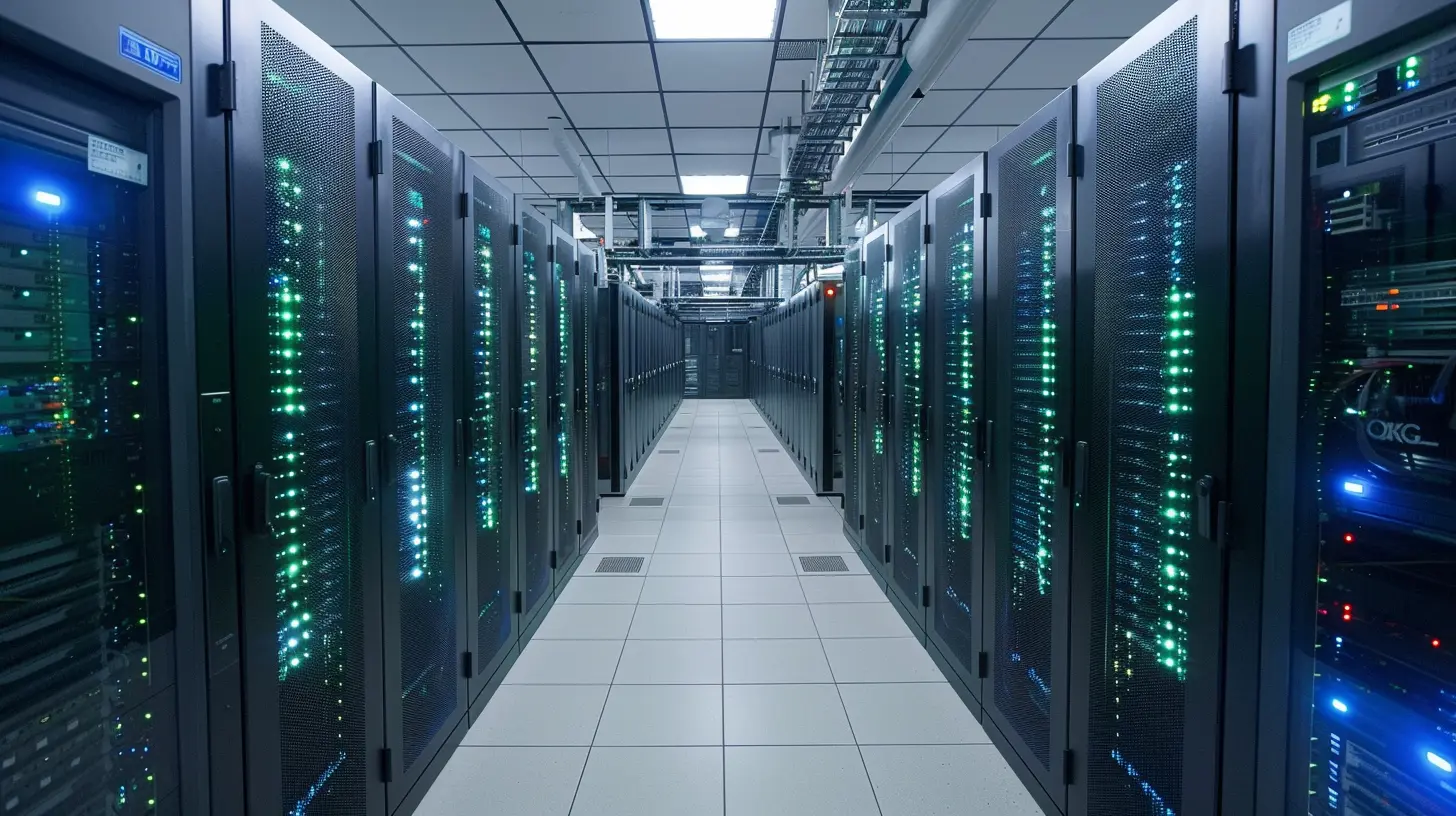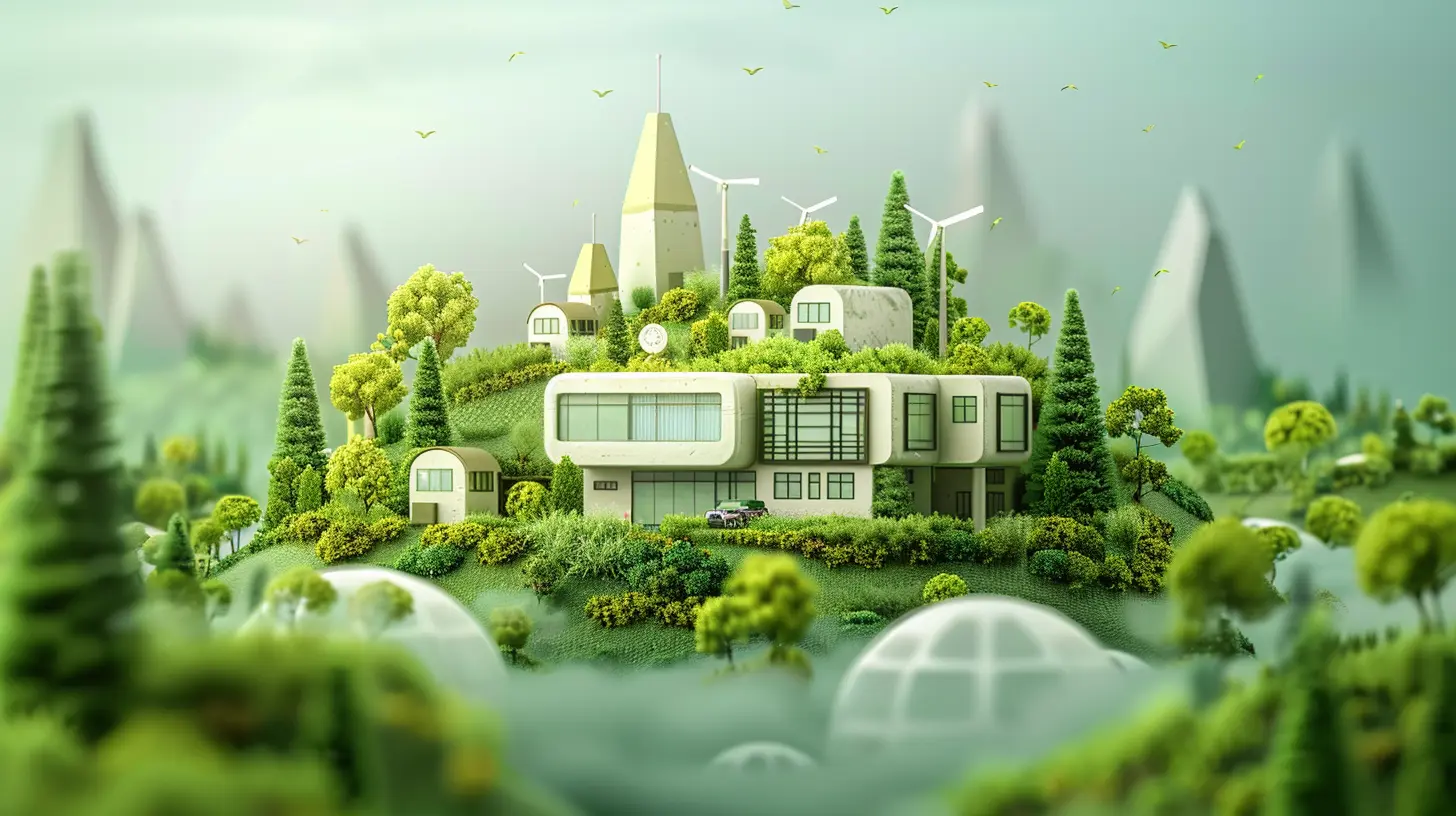Reducing the Carbon Footprint of Data Centers with Green Solutions
3 November 2025
As our world becomes more and more digital, the amount of data we generate grows exponentially, and with it, the demand for data centers. These facilities are the backbone of the internet, enabling everything from streaming movies to storing your photos in the cloud. But, as essential as they are, data centers have a dirty little secret—they’re huge energy hogs. In fact, it’s estimated that data centers contribute to about 1% of global electricity consumption, and the numbers are only rising.
So, how do we support our growing digital world without cooking the planet? The answer lies in reducing the carbon footprint of data centers, and thankfully, green solutions are starting to take center stage.

What Makes Data Centers So Energy-Intensive?
Before diving into green solutions, it's important to understand why data centers are such energy guzzlers. A typical data center might house thousands of servers, each of which generates heat while it processes data. That heat needs to be managed, and the cooling systems required to keep servers from overheating are a major source of energy consumption.Here’s a breakdown of where all that energy goes:
- Powering the servers: This is the primary energy sink. Servers need electricity to compute, store, and transfer data.
- Cooling systems: All that computing power generates heat. If the temperature rises too high, servers can malfunction. Cooling systems—air conditioning, fans, and more—are necessary to maintain an optimal temperature.
- Supporting infrastructure: Data centers also use energy for lighting, security, and other operations, which, while smaller than the other categories, still add up.
The result? Data centers can have an enormous carbon footprint if they rely on non-renewable energy sources like coal or natural gas.

Why Reducing the Carbon Footprint of Data Centers Matters
The environmental impact of data centers is often overlooked, but it’s becoming harder to ignore. Consider this: the global demand for digital services is growing by leaps and bounds. As more industries embrace cloud computing, artificial intelligence (AI), and the Internet of Things (IoT), the energy required to power these services will skyrocket.If we don’t tackle the energy inefficiencies of data centers, the future looks bleak. Climate change is already an urgent issue, and as one of the fastest-growing sources of energy consumption, data centers will play a huge role in either exacerbating or alleviating the problem. It’s time to explore green solutions that can help reduce their carbon footprint.

Green Solutions to Reduce Data Center Emissions
1. Switching to Renewable Energy Sources
One of the most straightforward ways to reduce the carbon footprint of data centers is by transitioning to renewable energy sources like solar, wind, and hydropower. Several major tech companies, including Google, Microsoft, and Amazon, have already made significant strides in this area by investing in renewable energy projects to power their data centers.For example:
- Google has been carbon-neutral since 2007 and is committed to running all its data centers on carbon-free energy by 2030.
- Microsoft has pledged to become carbon negative by 2030 and is achieving this by using renewable power and investing in carbon offset projects.
Renewable energy not only reduces the carbon footprint but also provides a long-term, cost-effective solution to energy needs. Plus, as renewable technologies improve, the cost of solar and wind energy continues to decrease, making it an attractive option for data centers looking to go green.
2. Energy-Efficient Hardware and Cooling Systems
Another way to reduce the carbon footprint is by improving the energy efficiency of the hardware and cooling systems used in data centers. Better hardware means less power is needed to perform the same tasks, while more efficient cooling systems reduce the energy required to keep servers at an optimal temperature.Here are some innovations making waves:
- Liquid Cooling: Traditional air-cooling systems are incredibly inefficient. Liquid cooling, on the other hand, uses fluids to absorb and dissipate heat more effectively than air. This method can reduce energy consumption associated with cooling by up to 50% in some cases.
- Free Cooling: In colder climates, data centers can take advantage of "free cooling," which uses the outside air to cool down servers rather than relying on energy-hungry air conditioning systems. This method can drastically reduce energy costs and carbon emissions.
- Energy-Efficient CPUs and GPUs: Modern processors are becoming more energy-efficient, meaning they can perform more computations per watt of energy used. This is especially important for data centers running AI or machine-learning workloads, which can be incredibly resource-intensive.
3. Optimizing Data Center Design and Layout
Sometimes, the solution lies not in the energy source or equipment but the physical design of the data center itself. By optimizing the layout of servers and other hardware, it's possible to improve airflow and reduce the need for extensive cooling systems.Key design optimizations include:
- Hot Aisle/Cold Aisle Containment: This design strategy involves separating the hot air generated by servers from the cold air used to cool them. By keeping these two airflows separate, data centers can significantly reduce the energy needed for cooling.
- Modular Data Centers: Instead of building giant, inefficient data centers, some companies are turning to modular designs. These smaller, more flexible data centers can be scaled up or down as needed, reducing energy waste.
4. Adopting AI and Machine Learning for Energy Management
Artificial intelligence and machine learning are not only transforming industries but also how data centers manage their energy consumption. AI algorithms can analyze real-time data to optimize energy usage dynamically. For instance, Google has been using AI to regulate the cooling in its data centers, resulting in a 40% reduction in energy used for cooling.With AI, data centers can predict when and where energy will be needed most, allowing them to adjust operations on the fly. This can help avoid energy waste and ensure optimal efficiency.
5. Virtualization and Cloud Computing
Virtualization is the process of running multiple virtual machines on a single physical server, reducing the amount of hardware needed. This means fewer servers, less energy consumption, and a smaller carbon footprint.Similarly, cloud computing allows for more efficient use of computing resources. By sharing resources across multiple users, cloud providers can optimize their data centers for maximum efficiency.
In fact, studies have shown that cloud data centers are generally more energy-efficient than traditional on-premise data centers. Cloud providers like Amazon Web Services (AWS), Microsoft Azure, and Google Cloud have made huge investments in energy-efficient technologies to minimize their environmental impact.
6. Carbon Offsetting and Carbon Capture
While the goal should always be to reduce emissions directly, sometimes it's impossible to eliminate them entirely. In these cases, companies can invest in carbon offset projects to neutralize their carbon footprint.Carbon offsetting involves funding projects that reduce greenhouse gases in the atmosphere, such as reforestation, renewable energy projects, or carbon capture and storage (CCS). CCS technology captures carbon dioxide emissions from the atmosphere and stores them underground, preventing them from contributing to global warming.
Although carbon offsetting isn't a silver bullet, it's a valuable tool for companies working towards carbon neutrality while continuing to innovate in other areas.

The Future of Green Data Centers
The future is looking bright for green data centers. As technology continues to evolve, we can expect to see more energy-efficient hardware, better cooling systems, and increased use of renewable energy. Governments and corporations alike are recognizing the urgency of climate change and are taking steps to reduce their carbon footprints.In the coming years, we may even see the rise of zero-emission data centers, where all energy comes from renewable sources, and energy-efficient designs minimize the need for cooling. These data centers will be essential in meeting the growing demand for digital services without compromising the health of our planet.
How You Can Help
While data center operators and tech giants play a significant role in reducing carbon emissions, individual users can also make a difference. Consider using cloud services from companies committed to sustainability, such as Google Cloud or Microsoft Azure. Every time you store a file in the cloud or stream a video, you have the power to choose a greener option.Additionally, staying informed about the environmental impact of our digital lives can encourage companies to continue innovating and adopting green solutions. After all, the future of our planet depends on the choices we make today.
Conclusion
Data centers are essential to our digital world, but they don’t have to be a threat to the environment. By adopting green solutions like renewable energy, energy-efficient hardware, and AI-powered energy management, we can significantly reduce the carbon footprint of data centers. The transition won’t happen overnight, but as more companies and individuals prioritize sustainability, we can build a cleaner, greener future for all.all images in this post were generated using AI tools
Category:
Sustainable TechAuthor:

Kira Sanders
Discussion
rate this article
1 comments
Valencia Patel
Sure, let’s turn those data centers green! Because saving the planet is cool—just like my carbon footprint after binge-watching tech trends! #EcoSavvy
November 4, 2025 at 7:39 PM

Kira Sanders
Absolutely! Every step towards greener data centers helps us reduce our carbon footprint and make a positive impact. Let’s embrace eco-friendly tech! 🌍💚


